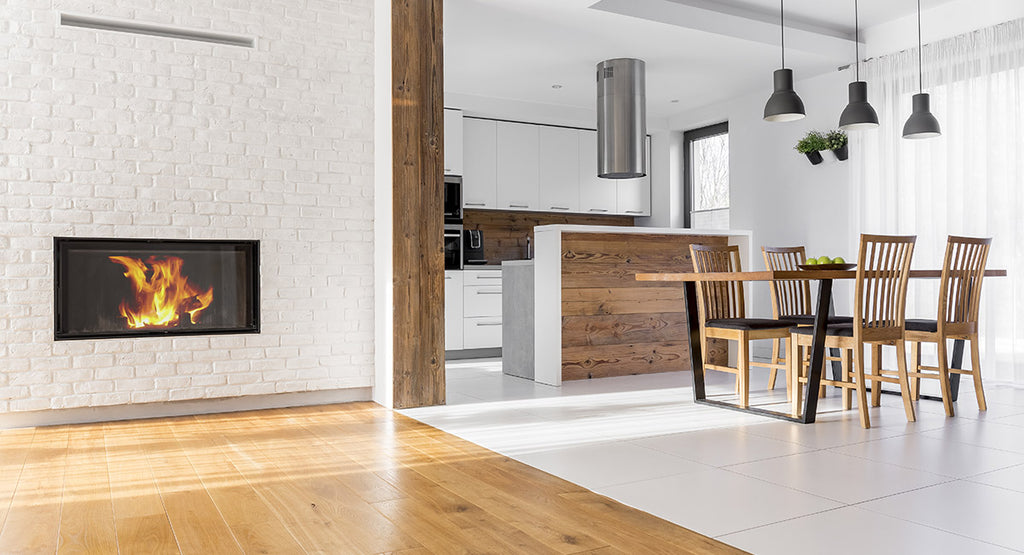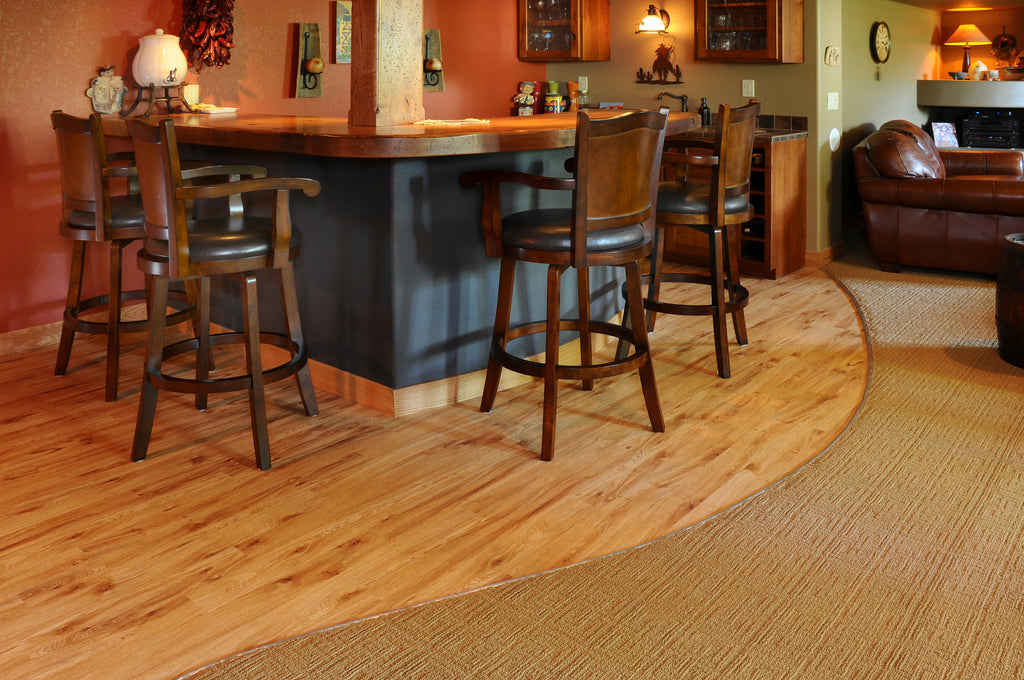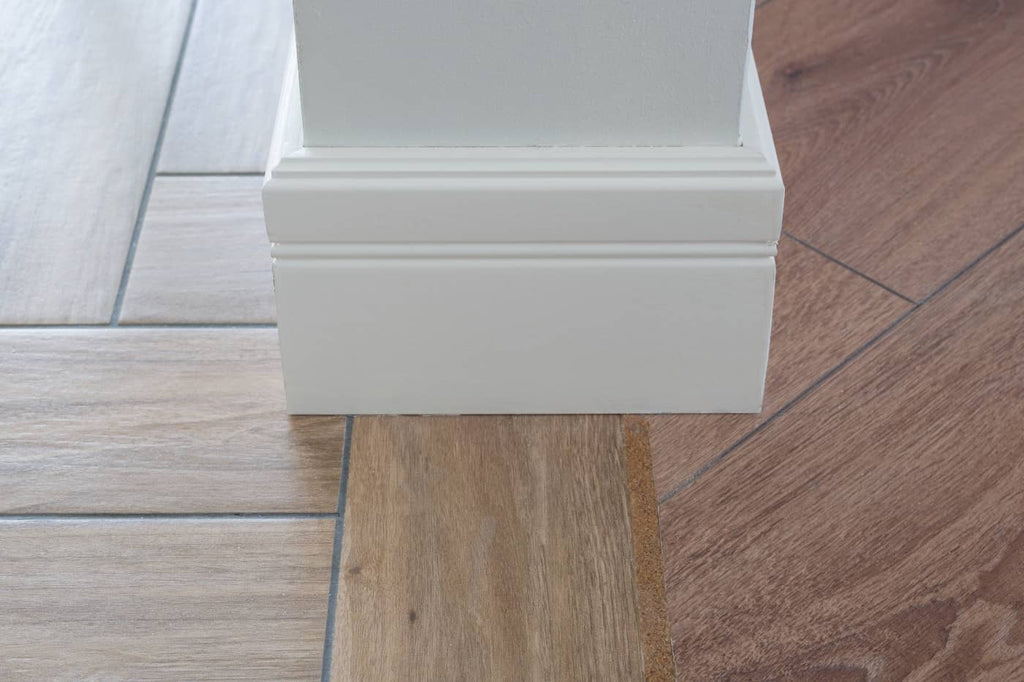Flooring Transitions: Creating Seamless Flooring Look
There is no one-size-fits-all solution when it comes to selecting the perfect flooring for your home. This is why in many homes, as you move from room to room, you will see a variety of flooring solutions such as flooring transitioning products.
The needs of each space are unique. The floors of bathrooms, kitchens, and laundry rooms should be waterproof and durable. In other spaces, such as your living room or bedroom, you may be seeking warmth and comfort, so a carpet or warm-toned hardwood flooring is likely to be a suitable choice.

There are so many factors at play, that choosing multiple flooring options for each space often makes sense. If this is done properly, it creates a seamless design while still ensuring separate areas can be utilized. Nevertheless, if done incorrectly, the change in flooring may cause a tripping hazard at the threshold in some cases and can feel abrupt and jarring.
What is the best way to design a seamless flooring transition? Choosing to floor can feel overwhelming due to the wide variety of options available and the many factors to consider. Following simple guidelines for choosing the best floors for your space, however, will make it easy to create seamless room transitions.
Selecting the Right Floors

You should begin by identifying your primary flooring. You will likely choose hardwood flooring, laminate flooring, tiles, vinyl, or carpet if you are starting from scratch or conducting major renovations that are not limited to just one room.
When renovating only one room, the primary flooring will be the floor that is not being changed, which borders the room that is being renovated. You should identify your primary flooring choice in order to create a seamless flooring transition between floors since your secondary floor will be based on your primary floor.
It may be more difficult to decide which floor to choose for your secondary floor. In choosing your primary flooring, you only need to consider the requirements of the space and your own personal preferences, whereas in selecting a secondary flooring, you must consider it not only in relation to the primary flooring but also in relation to the space in which it will be installed. How should you approach the design of your interesting transition?
How Will My Space Be Used?
You should first determine the purpose of the space in order to narrow down your choices. What you plan to do in the room plays an important role in determining the type of flooring you need. Is it a living room that is also used as a game room? It may be necessary to select a floor such as carpet or engineered hard surface flooring, which can absorb sound during those lively game nights, yet be durable enough to stand up to high traffic levels.
Is it likely to be exposed to a great deal of moisture? There may be a great benefit in considering waterproof/water-resistant options, such as laminate flooring, vinyl flooring, and tile flooring.
Looking for a smooth surface for your corner home office while maintaining a warm and cozy atmosphere in your bedroom? You may want to explore a hardwood or laminate that looks like wood with a warm tone.
How To Choose A Secondary Floor?
As you determine what you need and want for the space, narrow your options to those that best fit your needs. By doing so, you will be able to choose a complementary secondary floor, such as hardwood flooring or engineered wood flooring. Once you determine the type of flooring you want, you can consider other factors that are essential for creating a seamless transition between two different floors.
How Do I Choose The Right Flooring Colour?
When choosing colours for your flooring transition, there are several factors to take into consideration. The first thing you should consider is the colour of your primary floor. What is the undertone if the material is wood or has a wood-like appearance? Do you think it is a warm brown or a cool grey? Does the flooring have a dark, light, or in-between shade? Does it consist of one single colour, a combination of several colours, or a shade of the same color floor? Considering these questions will assist you in determining the color of your secondary flooring.
Ideally, complementary, but not identical, is best. If you attempt to make an exact colour match, you may give the impression that you tried to match, but were unable to do so. The best practice is to choose a colour that is complementary to the original and has similar undertones to prevent clashing colours and flooring materials.
As an example, if your hallway floor is a warm, medium-tone hardwood and you want carpet in your bedroom, you might choose a warm beige or go darker with a deep brown transition piece. You should follow the rule of “similar but different” when creating the transition between the two rooms.
What Is The Purpose Of Flooring Transitioning Products?

Floor transition strips define the boundary between two spaces by covering the edge of the floor. Specifically, a transition strip (t strip) is a piece of construction adhesive that is used to connect two types of floors together.
Floor Transition strips are often made of wood, but they can also be made of metal, aluminum, or vinyl. Flooring of the same type, like hardwood floors, may not require a transition strip between the rooms if you chose the same material.
It is important to note, however, that if your floors are made from different materials, such as carpet and laminate, you will require transition strips to accommodate the varying floor heights within the rooms and to facilitate the smooth transition from one flooring type to another, such as hardwood flooring or engineered wood flooring.
Types of Flooring Transition Strips

Floor transition strips come in three main types; which type you choose depends on the transition piece you are using and the two floors you are bridging together.
T-Moulding or T-Bar
T-Mold or T-Bars or T-0Mouldings... lots of names... are seam binders made of solid wood and are used for floor transitioning from hardwood floors to other floors with a hard surface and the same height, such as hardwood and ceramic tile floors. It is recommended to use the next transition strip if there are two floors that are of different heights.
Reducer Moulding
A reducer molding is a floor transitional strip that is also often made of wood and is used to bridge the edge between floor types that have differing heights, such as laminate and carpet.
End Mold or End Bar
The end bar (or a flooring End Mold) is used to connect the edge of hardwood or laminate flooring to another type of flooring, such as carpet, during the installation process. In the same way as the reduced molding, this product is designed to bridge gaps between floors that are different in thickness directions as well as ones of the same thickness.
Choosing Flooring Transitions: Go For What You Desire
In the end, the best room transition is one that is made using two floors that you enjoy. When selecting flooring for your home, ensure that it not only suits the needs of you and the space but also reflects your unique design preferences. As you consider these helpful guidelines, keep in mind that there are ways to seamlessly transition any two floors if you go with your gut when transitioning floors.
Other flooring blog articles you may want to read:
HOME FLOORING OPTIONS: WHAT ARE THE MOST DURABLE?
TWELVE OAKS FLOORS: DELIVERING EXCEPTIONAL FLOORS BECAUSE YOUR VALUE IS THEIR PROMISE
